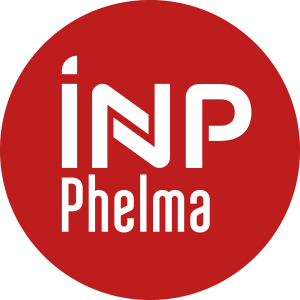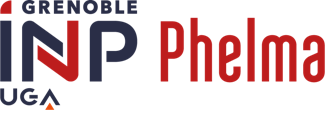Number of hours
- Lectures 4.0
- Projects 0
- Tutorials 4.0
- Internship 0
- Laboratory works 8.0
ECTS
ECTS 2.5
Goal(s)
The course is given entirely in English (shared course with international WICS Master students).
Understand the physical layer of radio communications standards used in wireless communications and mobile networks. Notions about the access layer will also be covered. As this course is intended for students specializing in RF circuits and devices, particular attention is paid to the structures of radio transmitters/receivers for these different communication standards as well as to the impact of hardware on digital signals. This course is closely linked to the 3A SEI SYRF project "Design of a WiFi transmitter/receiver.
Contact Yannis LE GUENNEC, Cyrille CHAVET, Laurent MONTESContent(s)
LECTURE:
- reminders of basic radio modulation techniques.
- the problem of radio communications and understanding the effect of the channel.
- OFDM waveforms, used for WiFi access networks and for mobile telephony. A simplified mathematical approach makes it possible to understand the interest of such modulations in the radio context but also to understand the material structure of the modulator and demodulator.
- spectrum spreading techniques.
- metrics for evaluating the performance of radio transmitters/receivers.
- system architectures of radio transmitters/receivers, definition of specifications.
LABWORKS:
2 practical work sessions address the following themes to deepen and complete the course:
- multiple antenna radio systems (MIMO, beamforming)
- spectrum spreading techniques.
HOMEWORKS:
3 supervised works, carried out independently (personal work or in a group of 2 students maximum), will be carried out by the students on the main themes of the course.
MCQ:
Multiple choice questions (MSQ) will be carried out during the course sessions to check that the concepts have been integrated.
Prerequisites
Basic knowledge of QAM digital modulations, signal to noise ratio,
Basic knowledge of signal processing techniques for communication systems (Nyquist filtering, matched filtering, intersymbol interferences, analog to digital conversion, digital to analog conversion).
Semester 9 - The exam is given in english only 
Session 1: Final mark= 33% Wiritten Examen (WE) + 67% continuous control (Homeworks + Labworks)
Session 2: Final mark= 33% Wiritten Examen (WE) + Sesion 1 - 67% continuous control (Homeworks + Labworks)
Situation normale
Session 1:
Note finale = 1/3 DS + 1/3 DM + 1/3 TP
DM: Devoirs maison
DS: Devoir surveillé
durée : 2h
documents autorisés: une feuille manuscrite recto-verso, pas d'autre document autorisé
calculatrice obligatoire
Session 2:
DS (remplacement de la note DS de la session 1)
durée : 2h
documents autorisés: une feuille manuscrite recto-verso, pas d'autre document autorisé
calculatrice obligatoire
Situation confinée
Session 1 Note finale = 1/3 QCM en ligne + 1/3 DM + 1/3 TP distanciel
Session 2: Devoir maison (remplacement de la note DM de session 1)
This course brings 3.0 ECTS to students in TU 1 RF Comm System (DD SEI-WICS)
Semester 9 - This course is given in english only
- Techniques de l'ingénieur "Modulations numériques"
- M. Joindot, A. Glavieux "Introduction aux Communications Numériques", éditions Dunod.
- J.C. Bic, D. Duponteil, J.C. Imbeaux, Eléments de communications numériques, Dunod
- G.Baudoin et al, "Radiocommunications numériques : Principes, modélisation et simulation", éditions Dunod, 2002.



